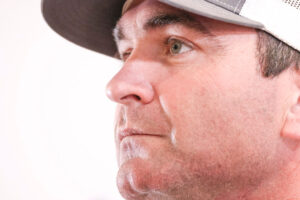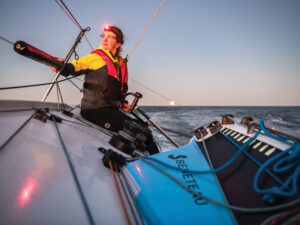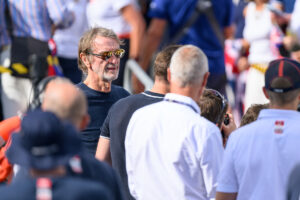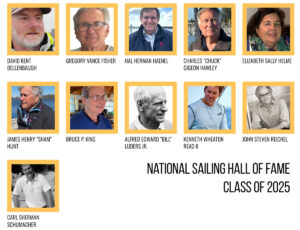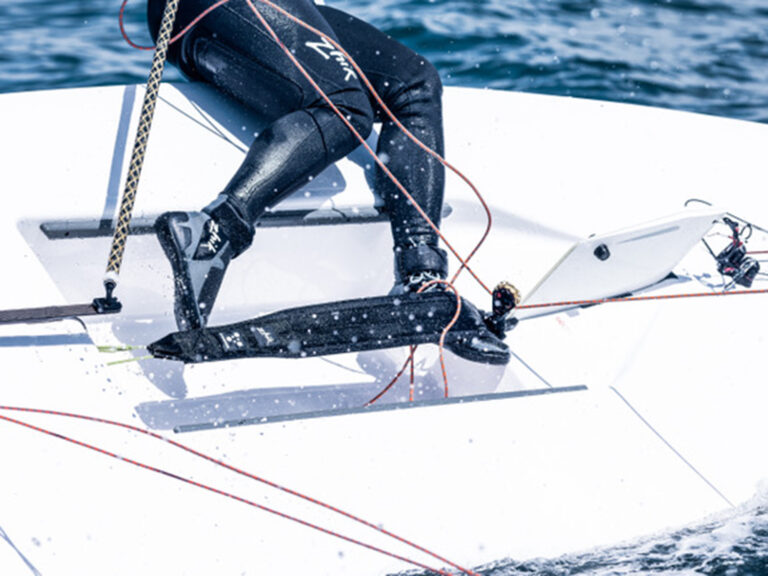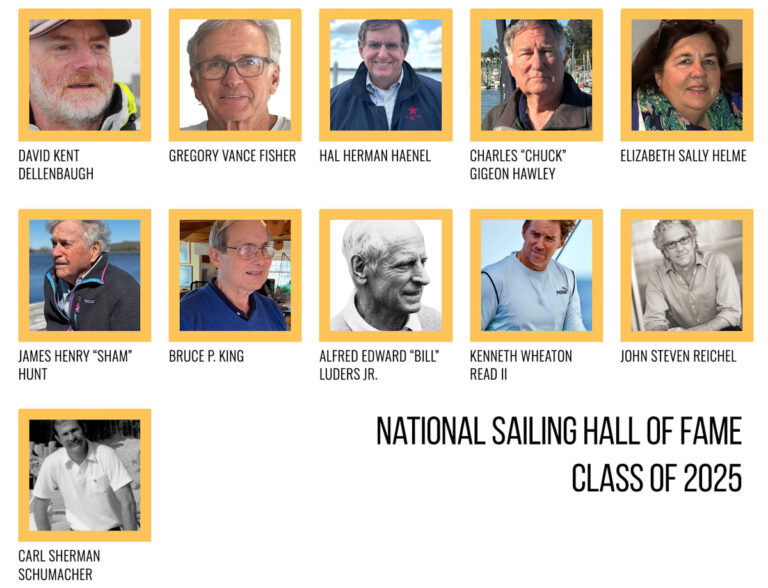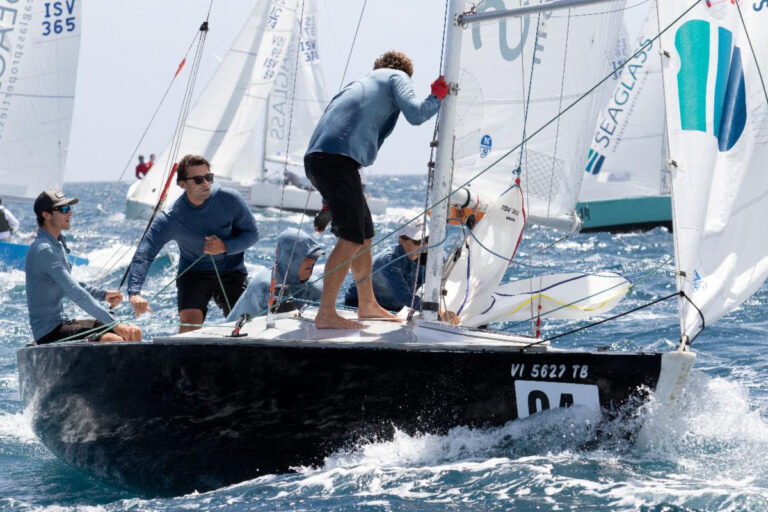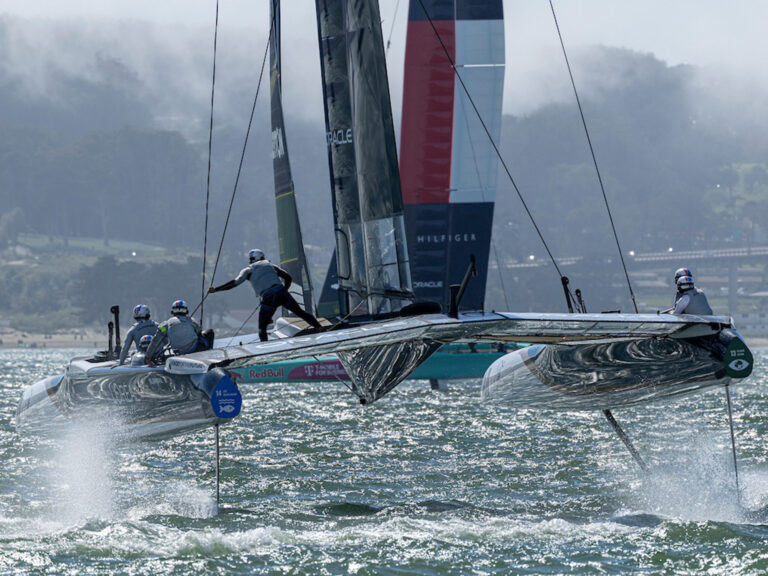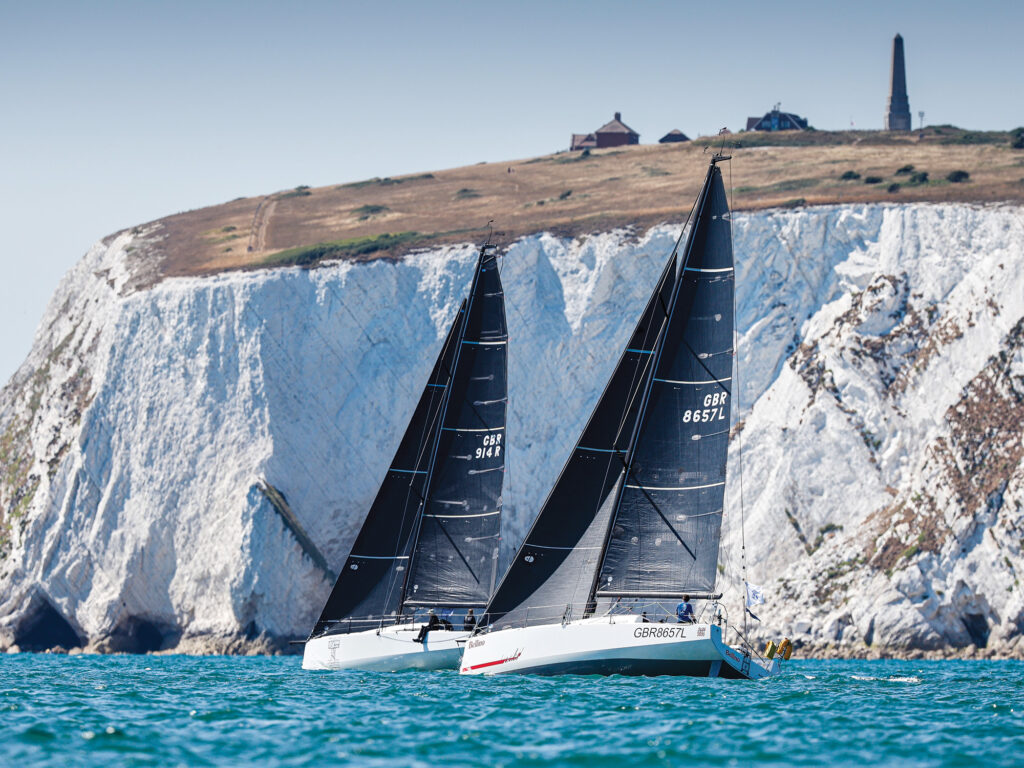
If a little bird were on board the Sunfast 3600 Bellino during the rough-and-tumble Rolex Fastnet Races of 2023, it would have heard Rob Craigie ask his teammate Deb Fish a simple but important question: “How are you doing?”
“Well, I’ve been better,” Fish would reply after momentarily considering her mental and physical state after three hours of relentless pounding in 25 knots of wind off the coast of England, conditions that had already thinned a third of the fleet.
“Yeah, me too,” Craigie would respond. “Would you like to carry on?”
“Yeah, why not keep going,” would be Fish’s reply.
“Thought you’d say that,” Craigie would answer. “I’m in too.”
Bellino has arguably been the most consistently successful racing yacht in England for the past two years. They won the RORC points championship in 2023, which is the cumulative scoring for all the Royal Ocean Racing Club’s approved races, ranging from 40 to 690 miles long. They won the UK Doublehanded Championship on a tiebreaker in 2024, besting 30 other doublehanded boats for the title, and by the time you read this, they will likely have won the RORC points title again in 2024.
The competition includes fully crewed boats of all sizes, not just doublehanders. And they recently finished a close second in the 2024 Drheam-Cup Doublehanded division, the most competitive event on the 2024 calendar, including French and other foreign boats (including Will Harris and me on Red Ruby). So, what is this super-high-tech racing machine, and who are these pro-sailing rock stars?
Don’t be fooled by appearances. Bellino is a nice boat, but it is a six-year-old stock Sunfast 3600 racer/cruiser, not the latest high-tech custom machine. Craigie is a lifelong racer, and at age 72, he has won his share of races. He has a lovable personality, like an imp, constantly chuckling as if he has a joke to share. But he is a retired electrical engineer with free time and a love of sailing. Sir Ben Ainslie does not stay awake at night worrying that Craigie is coming for his place.
Deborah Fish is a 54-year-old research scientist. She started sailing later in life, only recently finding her passion in shorthanded ocean racing. She is also commodore of the Royal Ocean Racing Club, is full of lively ideas, always willing to share, and loves a glass of red wine. Although deserving, she is not on the verge of signing a big IMOCA contract.
So, what has allowed these two modest and somewhat older sailors, and their humble production boat, to rise to the top of the UK racing scene? Having raced against them for the past two years, I have a few observations on their winning formula.
Perseverance: Keep fighting and never give up, unless common sense dictates.
Continual improvement: They pragmatically analyze what wins races and how to create a consistent system for avoiding errors and maximizing opportunities. They learn from their own mistakes and from others’ experiences, and rarely make the same mistake twice. They also share what they have learned with other UK doublehanded sailors, frequently leading postrace debriefs to ensure that everyone is capturing the lessons.
Well-defined roles: While doublehanded sailors need to be able to do everything on the boat, top teams also specialize to maximize each other’s strengths. On Bellino, Fish does weather analysis, routing, headsail trim, and most of the sailhandling duties. Craigie steers and trims the mainsail most of the time. On longer races, they often trade off, but for big decisions and sail changes, they know their roles.
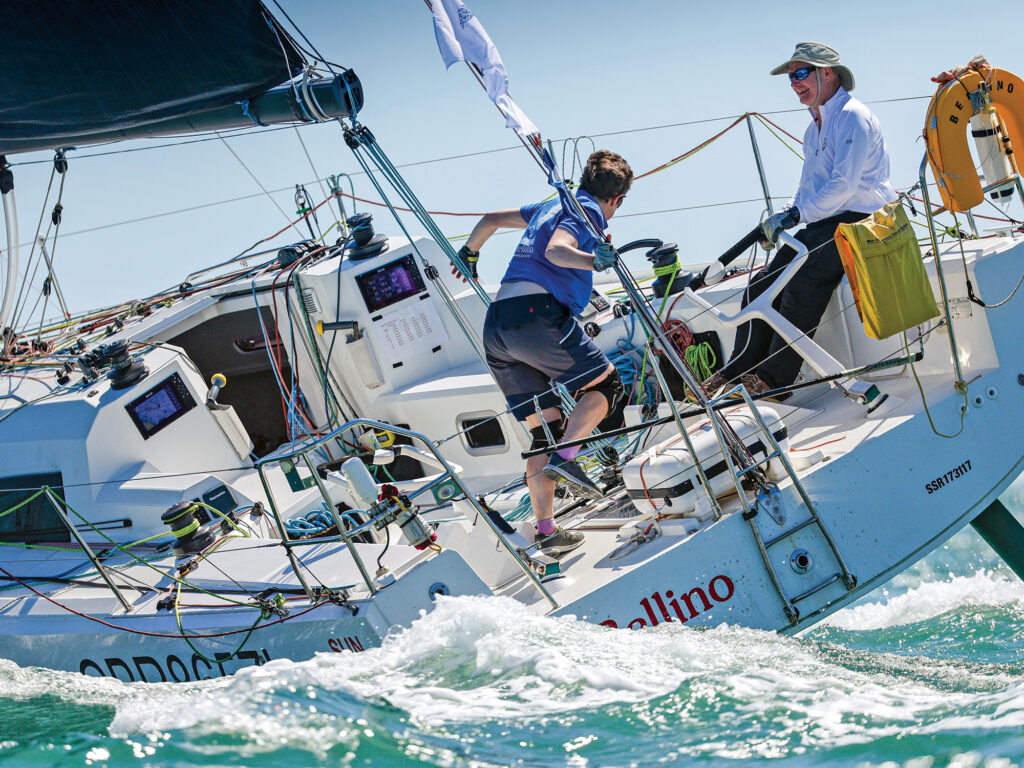
Low-risk tactics: They have created a tactical framework that allows them to use the best weather and current data to develop a plan, but then they temper the plan to reduce risk relative to the fleet. For example, they might skip a sail change if the gain is minuscule. Not that they couldn’t do the extra peel to the code zero, but they calculate that the gain does not justify the energy expended and the potential for trouble.
Reliability: They have focused on items on their boat that can break, and have taken measures to ensure that they can always finish the race. For example, a few years back, they bought a new J4 jib because they saw that in 25 to 35 knots upwind, they needed a strong, flat, small jib to reliably get around the course. It doesn’t get a lot of use, but it is money when it is needed. They also carry spares of critical equipment, carrying two wands, two autopilots and two navigation computers.
Optimize the rating: They race under IRC, which is pretty transparent for predicting the rating impact of various changes. With Bellino they have taken several subtle steps to keep their handicap low. They have reduced the total number of jibs they carry on a race, have kept the sail areas modest, and recently switched from symmetric to asymmetric spinnakers to reduce rating (no pole). The net result is the slowest-rated Sunfast 3600 in the fleet, but it’s a boat that is still fast enough to win.
Trust each other: This is a common thread among all successful doublehanded teams. You can’t have a skipper/crew mentality. You need two capable co-skippers, you need to make big decisions together, and you need to be able to take a nap knowing that your partner is going to sail the boat well. Craigie and Fish have developed supreme trust in each other over the years through their collective experience.
Spend budget carefully: Bellino is not a high-budget program, unlike many teams they beat. They don’t pay for high-level weather analysis (like I do). Using her science background, Fish does her own analysis of wind and current, using free and publicly available resources. They do all their own deliveries, and they sleep on their boat instead of getting a hotel (like I do). They do most of the work on their boat. They invest in one or two new sails per year but forgo many niceties. Through these modest steps, they can extensively campaign a 36-foot racing boat on a budget that is less than a typical J/70 program.
The Bellino approach to offshore racing takes away so many excuses for not performing well, and provides a road map of efficiency, consistency, and rational thinking. We can all benefit from this example of how to do more with less and how to turn your limitations into strengths. It also shows that modest, practical, nice people can win. So, the next time someone tells you, “Nice guys finish last,” think of Bellino.

